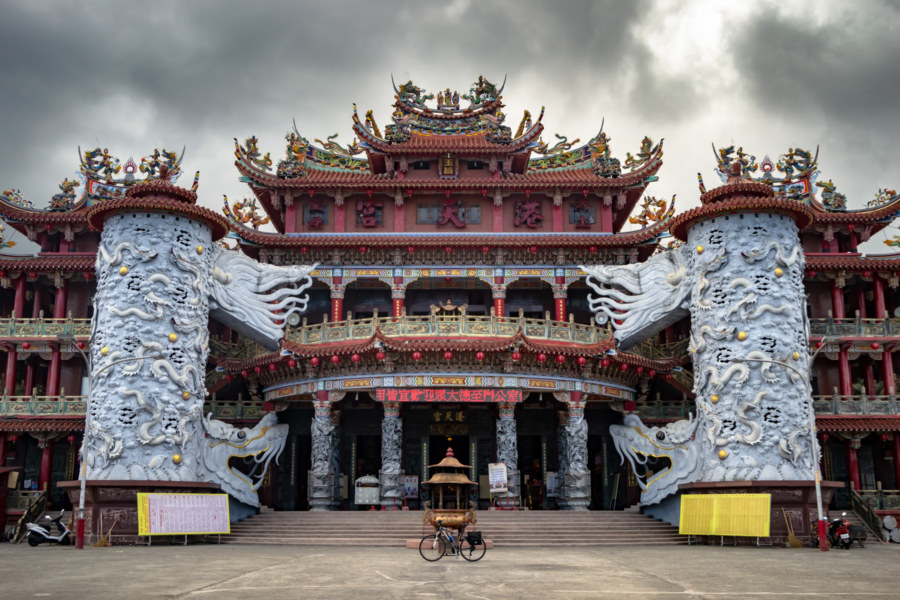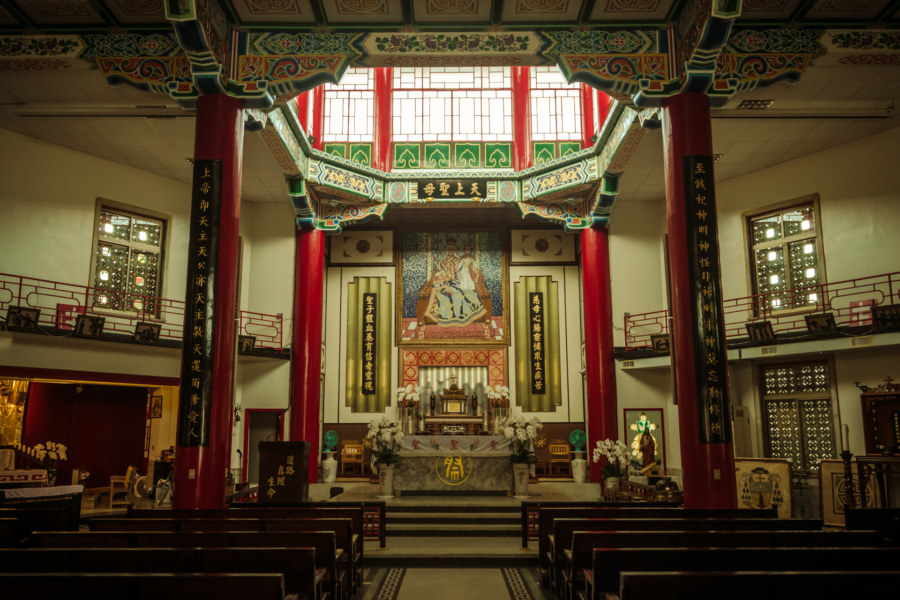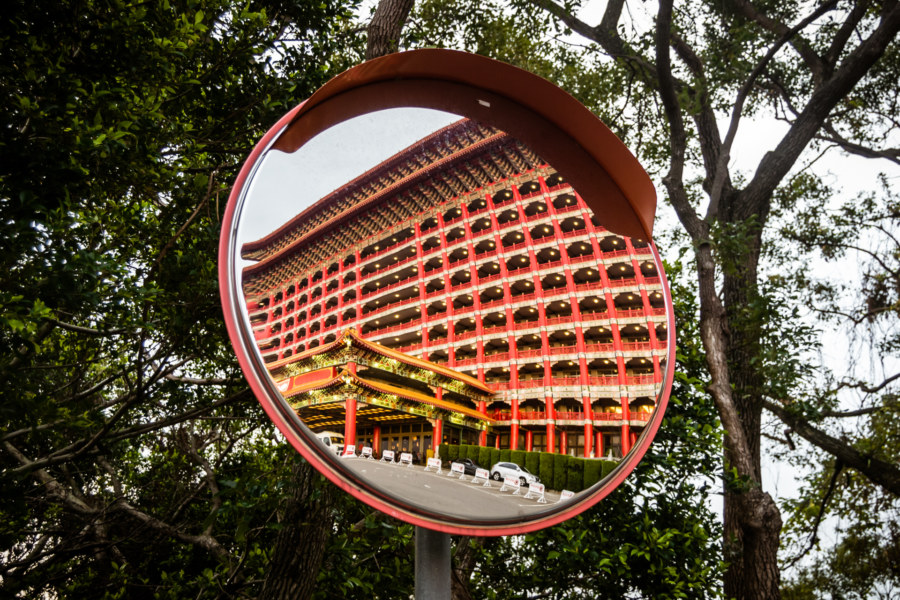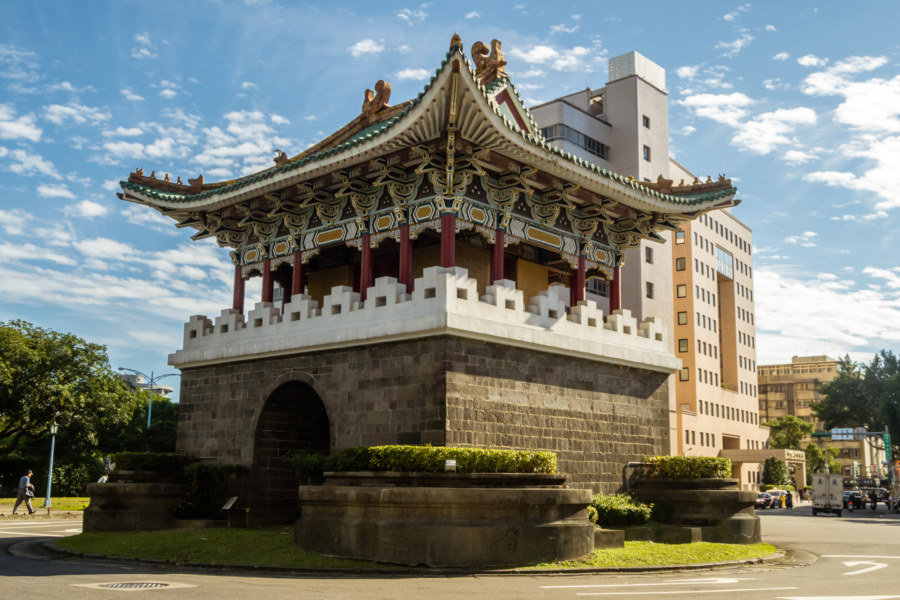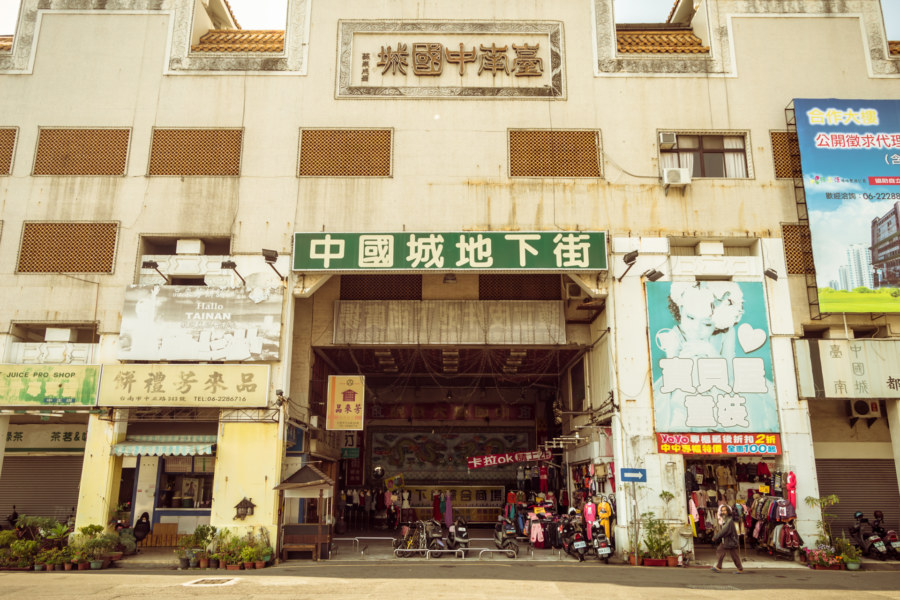In May 2018 I embarked on a multi-day bicycle trip along the majestic Huādōng Valley (花東縱谷) of Taiwan from Hualien City to Taitung City. Although I had previously cycled parts of this valley during my full tour of the island in 2013 I did so without really knowing what was there—and after five years I amassed quite a collection of notes about places I was interested in seeing up close. Several themes emerged while preparing for this trip: old standalone movie theaters, of which I had located more than a dozen; derelict railway infrastructure including stations, military checkpoints, and abandoned lines; and relics of the Japanese colonial era, particularly former Shinto shrines. This post documents my first day of riding, which only began in the late afternoon after arriving by rail at Hualien Station. I had shipped my bike ahead so all I had to do was pick it up from the baggage room, throw the panniers on, and start riding.
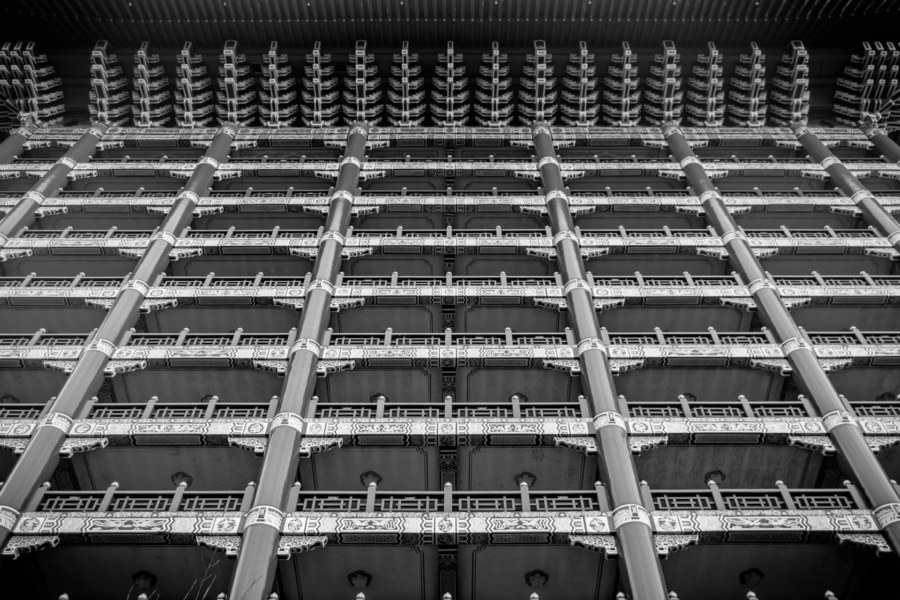
Chinese Renaissance Architecture (中國古典式樣新建築) traces its origins to the 1920s, when western-trained architects began experimenting with new materials and techniques in search of a new architectural vocabulary for China. In the post-war period the Communist and Nationalist governments pursued different architectural priorities. This blog is primarily concerned with manifestations of the style in Taiwan during the KMT authoritarian era, when a recognizable and cohesive style emerged, blending glazed tile and northern Chinese aesthetics with reinforced concrete and modernist forms typically seen in government and institutional buildings as well as many churches around the country.
Our Lady Queen of China Cathedral 中華聖母主教座堂
Back when I was living in Tainan I made an effort to check out many of the temples I encounter in my daily travels around town. One day after breakfast, while riding along Kāishān Road (開山路), I stopped to check out what looked to be yet another temple across the street from the Koxinga Shrine (延平郡王祠). I was surprised to learn that despite the palatial Chinese architecture and seemingly traditional style of design this is a Catholic church, officially Our Lady Queen of China Cathedral (中華聖母主教座堂). Built in 1963, it is the top-ranking church in the Roman Catholic Diocese of Tainan (天主教台南教區). The name is derived from Our Lady of China (中華聖母), an apparition of Mary that took place during the Boxer Rebellion (義和團運動) in China in 1900.
Taipei Grand Hotel 圓山大飯店
Yesterday’s impromptu ride around the riverside bikeway network delivered me to the palatial Grand Hotel (Yuánshān Dàfàndiàn 圓山大飯店), a famous landmark in Zhongshan, Taipei. Located on a hilltop overlooking a bend of the Keelung River (基隆河), it was established in 1952 at the behest of generalissimo Chiang Kai-shek to provide the ruling elite with a luxurious place to host and entertain foreign dignitaries. The distinctive building seen in these photos was completed in 1973 and was the tallest building in the Free Area of the Republic of China until 1981.
Taipei Xiaonanmen 臺北府城小南門
Today is winter solstice, the shortest day of the year in the northern hemisphere, and it is a record-breaking 30°C in Taipei. In Chinese culture it is customary to consume tāngyuán (湯圓, glutinous rice balls typically immersed in hot, sweet soup) on winter solstice, better known to locals as Dōngzhì (冬至), a time when families gather together and celebrate growing one year older. Since I have no family here I will be lining up at 36 Yuánzǐ Shop (三六圓仔店) for a bowl sometime later on—though I might just skip this particular ritual if the line-up is too crazy. Two years ago I was informed, contrary to expectations, that you won’t actually age without eating tangyuan on dongzhi. If I miss it this year I suppose I won’t mind.
Tainan Chinatown 臺南中國城
Tainan Chinatown 臺南中國城 is a half-abandoned and soon to be demolished shopping mall and entertainment complex in Tainan City. Built in 1983, it was designed by C.Y. Lee, a famous architect who later directed the construction of 85 Sky Tower and Taipei 101. I went by to shoot a few photos with some friends one sunny afternoon in January 2014 so I figure I may as well share them here.
